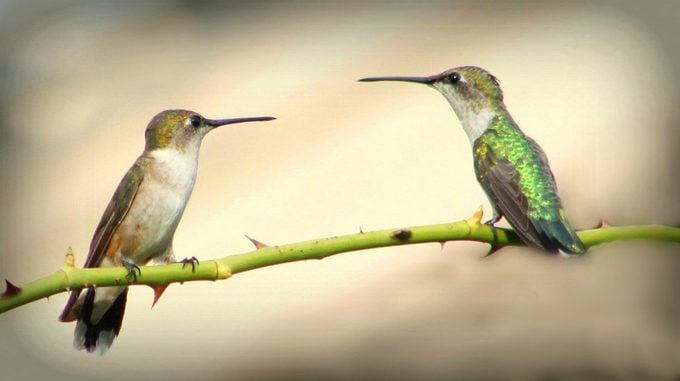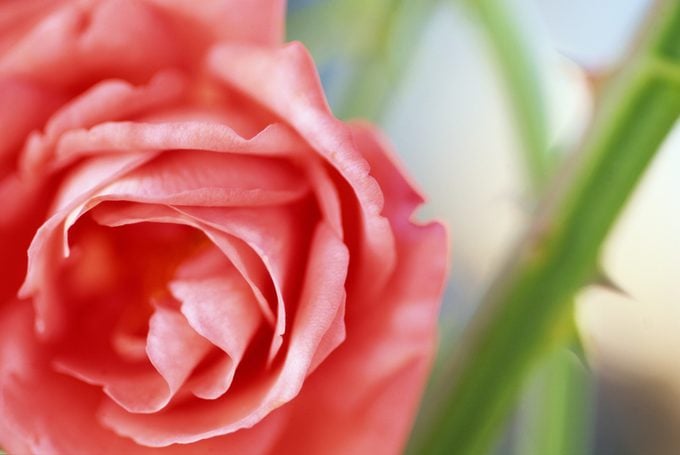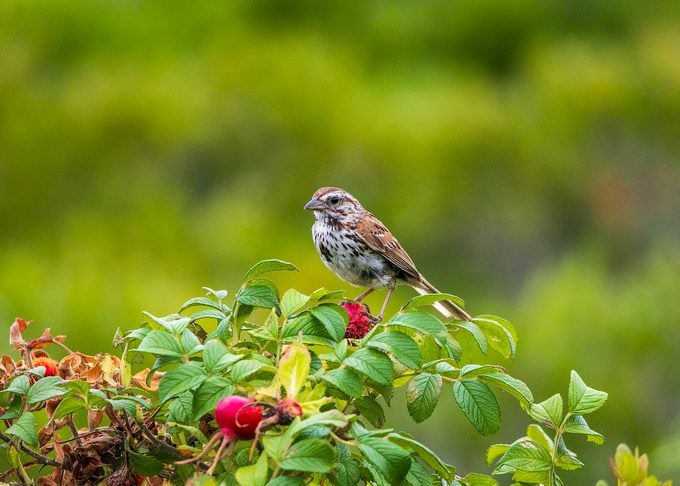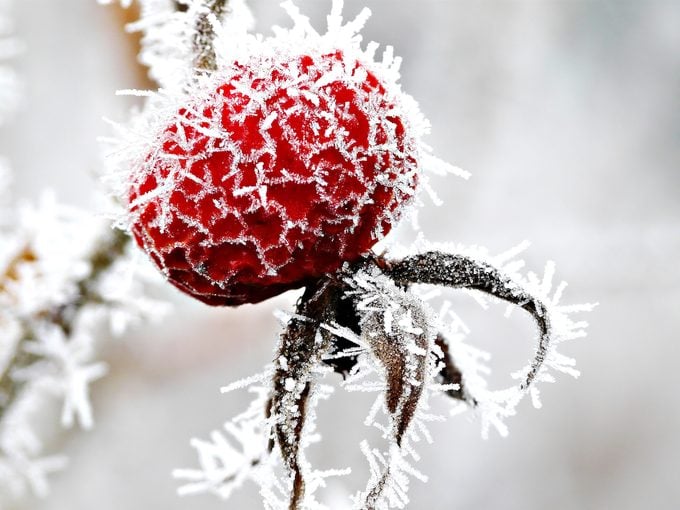Why Do Roses Have Thorns (and Hips)?
Updated: Jul. 27, 2023
If you've ever pricked your finger while gardening, you've probably wondered why roses have thorns. Also find out what rose hips look like.

A popular form of evaluation for a situation in life is called the “rose, bud, and thorn” exercise. The thought process labels a positive highlight as a “rose,” a “bud” as an opportunity and a “thorn” as an obstacle to overcome. Clearly, thorns have a negative connotation. You’ve probably wondered why roses have thorns and take care to avoid them.
But in the garden, rose thorns serve a beneficial purpose—they help ensure success of the bush. Roses are the inspiration for poems, songs and stories, thanks to their petaled presence and intoxicating perfume. They are also symbolic and used in emblems, flags, badges, coats of arms and have special meaning by color. Garden experts estimate there are thousands of types of roses grown today. So maybe it’s time we appreciate rose thorns a bit more. Also find out what rose hips look like and when you can spot them.
Why Do Roses Have Thorns?

Plants have sharp, pointed thorns to deter herbivores, the animals that eat plants. The predominant function of thorns is to serve as protection for the rose bush and help guarantee its survival.
Scientists explain that roses have thorns as a natural defense. Thorns protect the leaves and flowers from being eaten by animals that are attracted to their enticing fragrance and taste.
This type of defense is known as a physical defense because the plant physically defends itself from harm. Curious animals like deer and rabbits get an unpleasant poke and learn to stay away. Thorns often curve downward to prevent animals from climbing up and eating the rose. Humans are also sometimes guilty of causing damage to roses.
Did you know: Botanists classify roses as having thorns and “prickles.” Thorns are a harder growth on the roses and prickles are softer but still sharp to the touch.
Do roses need full sun or shade to grow best?
What Happens If Thorns Are Removed From Roses?

Don’t be so quick to cut the thorns off of your long-stemmed roses on Valentine’s Day. Roses with thorns still intact will last longer in a vase than those that have had the thorns removed. The water in a vase of roses without thorns will begin to turn cloudy faster because of the wounds made on the stem. The cuts may lead to contamination in the water and deterioration of the stem itself.
Discover surprising facts about roses.
Do All Roses Have Thorns?
Gardeners and flower lovers know that many varieties of roses must be handled carefully because of their thorns. But not all roses have thorns. Some varieties have very few thorns, and a few can be classified as completely thornless.
A thornless rose is a good choice for planting along walkways where people will be passing close by or in garden and patio areas where young children and pets will be active. They also make pruning easier and less painful.
Check out the top 10 prettiest hybrid tea roses to grow.
What Are Rose Hips?

Rose hips are the fruit, or seed pods, of the rose plant. They can appear as crimson red, orange, dark purple or black in color. They are the size of a pearl and ripen in late summer or fall. If you have roses in your garden, you can find their hips when you deadhead the bushes.
Removing spent flowers will encourage more active blooming growth (learn when to fertilize roses and peonies). But if you stop deadheading, your rose bush will naturally focus its energy on producing seed pods. All roses will produce hips at the end of summer and into the fall season. If the plants are left alone, you should find an abundance of rose hips emerge on your bushes.
Here’s how to prepare and prune roses for winter.

Identifying rose hips is fairly easy. Look for them along the canes. They can range in size from a small pearl to a cherry tomato.
Rose hips are edible. Their tart flavor tastes like crabapples with notes of floral sweetness. Rose hips are enjoyed in jams, syrups, spreads and teas, and are packed with vitamin C. Throughout history, they have also been used as a natural remedy for various health ailments. Berry-loving birds may eat them as well.
The next time you stroll the garden on a sunny afternoon, be sure to watch for thorns as you stop to smell the roses, and take notice of the rose hips as well.




















